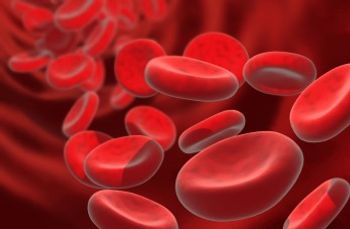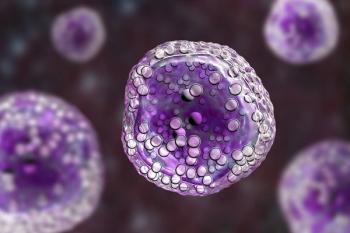
Tisagenlecleucel Continues to Produce Durable Responses After Long-Term Follow-Up in R/R Follicular Lymphoma
The phase 2 ELARA trial indicated continued durable responses when patients with relapsed/refractory follicular lymphoma were treated with tisagenlecleucel.
After 2 years of follow-up, tisagenlecleucel (Kymriah) continued to induce high rates of durable responses in patients with relapsed/refractory follicular lymphoma, according to results from the phase 2 ELARA trial (NCT03568461), which were presented at the
A complete response (CR) rate was observed in 68% (95% CI, 58%-77%) of patients, and there was an overall response rate (ORR) of 86% (95% CI, 78%-92%). Of all patients, baseline disease characteristics were observed in 63% of those who had progression of disease within 2 years (POD24), high metabolic tumor volume in 21%, bulky disease in 64%, double refractory disease in 67%, and a high Follicular Lymphoma International Prognostic Index (FLIPI) score of 3 or more in 59%.
“Tisagenlecleucel was found to be well-tolerated and feasible for outpatient administration. The extended follow-up of 2 years or more from the ELARA trial continues to demonstrate durable efficacy and a favorable safety profile following tisagenlecleucel in patients with relapsed/refractory follicular lymphoma,” Martin Dreyling, MD, lead study author and associate professor at the University of Munich, said during the presentation.
The study design included an initial screening, apheresis, and cryopreservation; enrollment with optional bridging chemotherapy and tisagenlecleucel manufacturing; followed by a restaging of lymphodepletion; tisagenlecleucel infusion; first efficacy assessment at month 3; and concluded with a long-term follow-up. Patients received a single intravenous infusion of tisagenlecleucel with a dose range from 0.6 to 6x108 CAR-positive viable T cells. Tisagenlecleucel was received by 18% of those in the outpatient setting,
In the long-term analysis, there were no new safety signals observed. However, Dreyling did point out that all-grade cytokine release syndrome occurred in 49% (n = 47/97) of patients, and 0% had grade 3 or higher events. Additionally, all-grade immune effector cell neurotoxicity syndrome was observed in 4% (n = 4/97) of patients, and 1% (n = 1/97) had a grade 3 or higher event. Grade 3 or higher neurological events occurred in 2% (n = 2/97) of patients. Of those who received outpatient treatment, none required intensive care unit treatment, and one-third did not need hospitalization to manage effects.
After a median follow-up of 29 months, the secondary end points of median duration of response (DOR), progression-free survival (PFS), overall survival (OS), and time to next treatment (TTNT) were not reached.
The median DOR for all patients and those with a CR were not estimable (NE). However, those with a partial response (PR) had a median DOR of 3 months (95% CI, 2-4). The event-free probability in all patients at 12 months was 74% (95% CI, 62%-82%) and 66% (95% CI, 54%-76%) at 24 months. Additionally, the event-free probability for patients in CR at 12 and 24 months, was 87% (95% CI, 76%-93%) and 78% (95% CI, 65%-87%), respectively.
The median PFS for all patients and those who had CR were not met, but the median for those in PR was 6 months (95% CI, 5-6). The event-free probability in all patients was 67% (95% CI, 56%-76%) at 12 months and 57% (95% CI, 46%-67%) at 24 months. For patients with CR, the event-free probability was 87% (95% CI, 76%-93%) at 12 months and 75% (95% CI, 62%-84%) at 24 months.
Additionally, the median OS in all patients was NR, but was 35 months (95% CI, 35-NE) for those in CR and 26 months (95% CI, 24-NE) for those in PR. The 12-month event-free probability in all patients was 95% (95% CI, 88%-98%), and the 24-month rate was 88% (95% CI, 78%-93%). For patients with a CR, the 12-month event-free probability was 98% (95% CI, 89%-100%), and the 24-month rate was 95% (95% CI, 85% -98%).
The median TTNT was not reached for all patients and for those with a CR. However, for those who had a PR, the median TTNT was 10 months (95% CI, 6-NE). The event-free probability for all patients at 12 months was 80% (95% CI, 70%-87%) and 70% (95% CI, 59%-78%) at 24 months. In patients who had a CR, the event-free probability was 95% (95% CI, 86%-98%) at 12 months and 83% (95% CI, 71%-91%) at 24 months.
Patients with higher baseline tumor burden had shorter PFS, which included metabolic tumor volume by PFS (P = .026) and DOR (P = .0016).
In the exploratory analysis at POD24, the nodal area involvement, tumor volume, and lymphocyte activation gene (LAG) T cells in the tumor microenvironment (TME) were prognostic for PFS separation. Additionally, lower LAG-positive T cells were more favorable towards TME and were associated with a longer DOR (P = .0086) and PFS (P = .0017).
Additionally, lower tumor necrosis factor (P = .019) and interleukin-10 levels (P = .031) were less inflammatory and showed a prolonged PFS.
Reference
Dreyling M, Dickinson M, Martinez-Lopez J, et al. Long-term clinical outcomes and correlative efficacy analyses in patients with relapsed/refractory follicular lymphoma treated with tisagenlecleucel in the ELARA trial. Presented at the 2022 American Society of Hematology Annual Meeting; December 10-13; New Orleans, LA. Abstract 608.
Newsletter
Stay up to date on recent advances in the multidisciplinary approach to cancer.


















































































